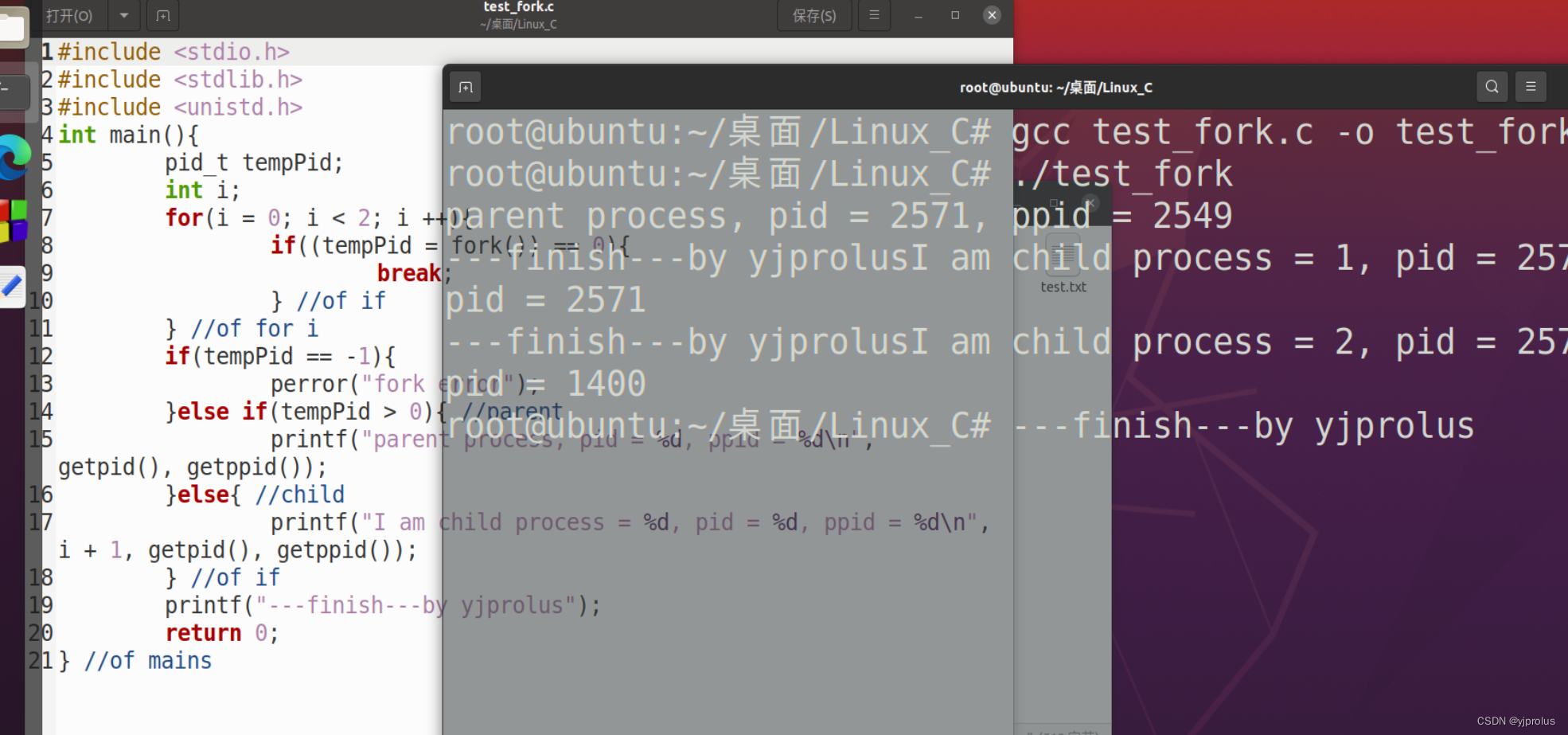几个重要知识点
- 孤儿进程
- 父进程和子进程
- init进程的作用
- sleep函数
几个问题
- 多次执行test_fork会发现,child process后输出的ppid不等于parent process的pid,而等于1:父进程先于子进程终止,子进程变成“孤儿进程”,后面由init进程来接收
- 子进程的编号不是递增的:子进程应由父进程回收,但是当子进程被创建后,它与它的父进程及其它进程共同竞争系统资源,所以父子进程执行的顺序是不确定的,终止的先后顺序也是不确定的。简单来说,所有进程优先级是相同的,不会按进程号运行
- 终端提示符后面仍然有子进程信息打印,而命令提示符在最后一行的开头闪烁:进程还没完全运行完
代码
案例2
#include <stdio.h>
#include <stdlib.h>
#include <unistd.h>
int main(){
pid_t tempPid;
int i;
for(i = 0; i < 2; i ++){
if((tempPid = fork()) == 0){
break;
} //of if
} //of for i
if(tempPid == -1){
perror("fork error");
}else if(tempPid > 0){ //parent
printf("parent process, pid = %d, ppid = %d\n", getpid(), getppid());
}else{ //child
printf("I am child process = %d, pid = %d, ppid = %d\n", i + 1, getpid(), getppid());
} //of if
printf("---finish---by yjprolus");
return 0;
} //of mains
运行结果
案例3
出现sleep函数的地方程序会延缓运行
#include <stdio.h>
#include <stdlib.h>
#include <unistd.h>
int main(){
pid_t tempPid;
int i;
for(i = 0; i < 2; i ++){
if((tempPid = fork()) == 0){
break;
}//of if
}//of for i
if(tempPid == -1){
perror("fork error");
}else if(tempPid > 0){//parent
sleep(2);
printf("parent process, pid = %d, ppid = %d\n", getpid(), getppid());
}else{//child
sleep(i);
printf("I am child process = %d, pid = %d, ppid = %d\n", i + 1, getpid(), getppid());
}//of if
printf("---finish---by yjprolus");
return 0;
}//of main

总结心得
学会了fork()的基本用法,对父进程和子进程有了更加清楚的认识,了解了Linux终端的进阶用法,对程序的运行优先级和进程管理有了更深的认识。
翻阅书籍和相关博客资料,补充如下:fork()函数遵循“读时共享,写时复制”的原则;fork()仅仅被调用一次,却能够返回两次


康一康
支持支持